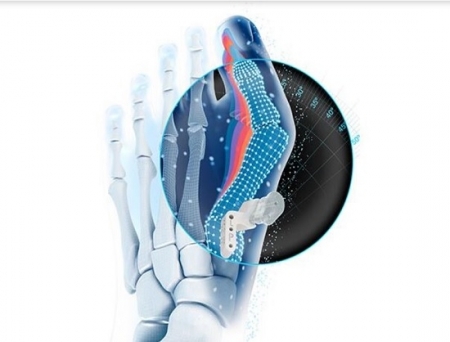Johnson and Johnson Unveils AI Solution for Bunion Surgery, Seeks FDA Nod to Expand TREMFYA Label

Johnson and Johnson MedTech, a global leader in orthopaedic technologies and solutions, has announced the launch of the VIRTUGUIDE System, an AI-powered solution for treating bunion deformities.
Developed in collaboration with PeekMed, the system is designed to support Lapidus procedures— a type of bunion surgery that helps realign the foot by joining two bones near the arch (the first metatarsal bone and the medial cuneiform).
VIRTUGUIDE uses pre-operative planning software to assess each patient’s bunion and make personalised recommendations for the intended correction.
Traditional Lapidus surgery to treat bunions is often challenging. The VIRTUGUIDE AI Lapidus System simplifies this process by enabling a streamlined approach and reducing surgical complexity. Early adopters of the system have reported procedural time savings of at least 30 minutes compared to previous techniques.
“The VIRTUGUIDE System is a pivotal advancement in AI-powered surgical precision for treating bunion deformities—a common, painful, and potentially debilitating condition affecting nearly one-third of Americans,” said Oray Boston, Worldwide President of Trauma, Extremities, Craniomaxillofacial, Animal Health and Sports Medicine, Orthopaedics, Johnson and Johnson MedTech.
“This milestone marks an important step forward, as VIRTUGUIDE becomes the latest addition to our growing portfolio of VELYS Enabling Tech solutions. By automating surgical planning and tailoring instrumentation to each patient, the system helps reduce complexity in the operating room and helps surgeons to achieve the intended correction,” he added.
This launch follows the 510(k) clearance from the US Food and Drug Administration (FDA) for the Pre-operative Planning Software, granted earlier this year, and the system is now available in the US.
“VIRTUGUIDE has completely transformed my approach to bunion surgery, making a complex Lapidus procedure significantly easier and faster. Since adopting VIRTUGUIDE, my surgical corrections have been spot-on—what I plan preoperatively is exactly what I achieve in the operating room,” said Michael Campbell, a board-certified orthopaedic surgeon at Atlantic Orthopaedic Specialists.
“This improved accuracy leads to better outcomes, and the ability to present the pre-operative plan to my patients helps address their questions and ease their concerns,” he added.
Johnson and Johnson has also submitted a supplemental Biologics License Application (sBLA) to the FDA seeking approval to include new evidence in the TREMFYA (guselkumab) label for the inhibition of progression of structural damage in adults with active psoriatic arthritis (PsA).
The submission is supported by the Phase 3b APEX study in patients with active PsA, which achieved both its primary endpoint of reducing joint symptoms (ACR20) and its major secondary endpoint of inhibited progression of structural damage as measured by change in the modified van der Heijde-Sharp (vdH-S) score at 24 weeks, compared to placebo in bio-naïve patients.
“With this new evidence, TREMFYA would become the first and only IL-23 inhibitor proven to provide symptom control and to significantly inhibit the progression of joint damage in patients living with active PsA,” said Brandee Pappalardo, Vice President, Medical Affairs, Dermatology and Rheumatology, Johnson and Johnson Innovative Medicine.
Johnson and Johnson MedTech Bunion deformities Bunion Surgery Bunions Lapidus surgery PeekMed VIRTUGUIDE System
Last news about this category
We use our own and third party cookies to produce statistical information and show you personalized advertising by analyzing your browsing, according to our COOKIES POLICY. If you continue visiting our Site, you accept its use.
More information: Privacy Policy

















